2
creating small media
Money
How to find money and keep small media going
1
How to find the money necessary to launch your project?
The lack of money at the beginning of the project is a problem that almost every small media project encounters. However, in moloko plus' experience, this problem can be dealt with. For example, money can be accumulated through a crowdfunding campaign, but it is very important to remember that this should only be used in rare cases, for example, to publish your first issue, launch your website or in an emergency. We do not recommend using crowdfunding campaigns to cover regular expenses, such as rent.
When we relaunched the latest version of Brand, around 2010, we borrowed money for start up capital. A few of us put down a bunch of money out of our own pockets, like 1000 or 2000 Euros. Then the first issue was sold out in connection with a release party on May Day, and got back that money.
2
How to create a stable source of income?
Donations and revenue from selling your publications or associated merchandise can, together with subscriptions from your loyal audience, create a small but stable income. This money can become a key resource for your project – you can use it to cover salaries and fees, as well as other regular project costs. You can organize regular donations through some social media interfaces (for example, VK or Facebook), paywall your content or use crowdfunding services such as Patreon, Kickstarter, or Liberapay.
While working on the first issue of moloko plus, we accumulated 100,000 rubles through crowdfunding. This first amount of money was actually a donation. The main goal of the collective was to never ask for money again to publish our almanac. And we have achieved our goal – our sales allowed us to print more issues. Little by little, our almanac became self-sufficient and today the majority of our sales goes through the bookstores that take the almanac on consignment. Another source of our revenue is the sale of merchandise, such as t-shirts, tote bags, pins, stickers and other limited merch we produce in collaboration with independent female artists and designers like Sasha Khayn, Rant Kohen, Rota Konchik (vulva) and the "Black Needle" cooperative (Anna Tereshkina and Helga Zinziver). We try to collaborate with brands that respect workers' rights and print on ethically produced t-shirts.
The last source of moloko plus' income is Patreon. We started using this service in September 2019, with the main point for us being to create a stable system that would cover our regular costs, such as social media administrators' fees, rent and stationary. In exchange for donations we offer our almanac, merchandise and online products.
While working on the first issue of moloko plus, we accumulated 100,000 rubles through crowdfunding. This first amount of money was actually a donation. The main goal of the collective was to never ask for money again to publish our almanac. And we have achieved our goal – our sales allowed us to print more issues. Little by little, our almanac became self-sufficient and today the majority of our sales goes through the bookstores that take the almanac on consignment. Another source of our revenue is the sale of merchandise, such as t-shirts, tote bags, pins, stickers and other limited merch we produce in collaboration with independent female artists and designers like Sasha Khayn, Rant Kohen, Rota Konchik (vulva) and the "Black Needle" cooperative (Anna Tereshkina and Helga Zinziver). We try to collaborate with brands that respect workers' rights and print on ethically produced t-shirts.
The last source of moloko plus' income is Patreon. We started using this service in September 2019, with the main point for us being to create a stable system that would cover our regular costs, such as social media administrators' fees, rent and stationary. In exchange for donations we offer our almanac, merchandise and online products.
We apply for a grant from the Swedish Arts Council every year. They provide some funding for magazines such as ours. It is considered part of an effort to guarantee freedom of expression to keep these small voices alive. A jury decides which magazines get funding and how much. Any magazine which receives funding must use the money to publish at least four issues per year.
To have grants is a luxury which makes it possible for us to spend less time raising funds and more time creating content. It allows us to go beyond the bare minimum and means we dont always have to go for the cheapest options. Our biggest expenses are printing and postage costs (unsurprising, perhaps, since we do not pay writers, illustrators, administrators and editors).
We do not pay anyone for any work, everyone works for free. We think it is hard to decide who would get paid and who wouldn't - so in a way it at least feels equal. It also opens up for not only having professionals writing, editing, and producing the visual material. We have sort of a D.I.Y. identity; we are basically an activist magazine for and by activists, even if we want it to have a serious and fancy feel to it, rather than looking like a traditional zine. People who write for us are invested in what they write about and want to contribute to and make use of our platform. They often provide perspectives from the inside of ongoing political struggles and the like.
We do not pay compensation for writers or illustrators, all proceeds go to the magazine: printing costs, postage, local rent and other administrative expenses. In addition to the inevitable expenses, we also have money set aside for campaigns and marketing in social media.
To have grants is a luxury which makes it possible for us to spend less time raising funds and more time creating content. It allows us to go beyond the bare minimum and means we dont always have to go for the cheapest options. Our biggest expenses are printing and postage costs (unsurprising, perhaps, since we do not pay writers, illustrators, administrators and editors).
We do not pay anyone for any work, everyone works for free. We think it is hard to decide who would get paid and who wouldn't - so in a way it at least feels equal. It also opens up for not only having professionals writing, editing, and producing the visual material. We have sort of a D.I.Y. identity; we are basically an activist magazine for and by activists, even if we want it to have a serious and fancy feel to it, rather than looking like a traditional zine. People who write for us are invested in what they write about and want to contribute to and make use of our platform. They often provide perspectives from the inside of ongoing political struggles and the like.
We do not pay compensation for writers or illustrators, all proceeds go to the magazine: printing costs, postage, local rent and other administrative expenses. In addition to the inevitable expenses, we also have money set aside for campaigns and marketing in social media.
We set up a goal of collecting at least one million Swedish crowns (about 100,000 Euros), in order to turn our concept into reality. We achieved that goal after a three week crowdfunding effort, using Go Fund Me, after which we could get to work on building a platform for our stories, and assembling an editorial team.
Our advice for new projects would be to make sure that supporters commit to regular donations from the start; recruitment of new supporters should be an active and ongoing effort. When we started out, the notion of crowdfunding media was still unexplored territory, so our vision alone caused a bit of a buzz. In principle it's not that different from selling a single issue of a paper or magazine, except that our backers supported an idea, rather than a finished product. A year after we achieved our original fundraising goal, we ran a new campaign to regain our original backers.
Today, our funding comes from three main sources: monthly or annual contributions from readers, larger grants from philanthropists and donors, and income generated by courses we conduct, events we organize, and books we sell.
Our advice for new projects would be to make sure that supporters commit to regular donations from the start; recruitment of new supporters should be an active and ongoing effort. When we started out, the notion of crowdfunding media was still unexplored territory, so our vision alone caused a bit of a buzz. In principle it's not that different from selling a single issue of a paper or magazine, except that our backers supported an idea, rather than a finished product. A year after we achieved our original fundraising goal, we ran a new campaign to regain our original backers.
Today, our funding comes from three main sources: monthly or annual contributions from readers, larger grants from philanthropists and donors, and income generated by courses we conduct, events we organize, and books we sell.

Blankspot
Blankspot Project is a citizen financed online media outlet, focusing on the media blank spots of the world
Today we are financed through money from the Swedish Arts Council, through Patreons and donations. We also arrange events, like release parties, where we gather money.
We use the Swedish payment app Swish, Patreon and sell merch such as shirts and bags. We've also had an auction where we gathered money.
We use the Swedish payment app Swish, Patreon and sell merch such as shirts and bags. We've also had an auction where we gathered money.
3
Summary. How to provide a regular and stable revenue for a small media?
The moloko plus collective can recommend five sources of revenue:
1. Donations. While this source doesn't provide much, it can provide necessary funds in crisis situations, that would be sufficient for lawyers' fees and other unforeseen costs. We do not recommend using donations as your main source of income.
2. Online and print sales of your content. Provides a large and regular income.
3. Merch. Provides a middle income that can grow if your media is popular and in high demand.
4. Patreon or some other online service with similar functions. The service like that allows you to receive money from your subscribers on a regular basis.
5. Organising events and parties. Events would allow you to bring your readers together and have fun while collecting money for your work.
6. Grants. Keep a close eye on different grant programs and don't be afraid to submit your project.
5. Borrowing money. Sometimes moloko plus borrows money from members of the team or uses credit cards (be careful with them).
1. Donations. While this source doesn't provide much, it can provide necessary funds in crisis situations, that would be sufficient for lawyers' fees and other unforeseen costs. We do not recommend using donations as your main source of income.
2. Online and print sales of your content. Provides a large and regular income.
3. Merch. Provides a middle income that can grow if your media is popular and in high demand.
4. Patreon or some other online service with similar functions. The service like that allows you to receive money from your subscribers on a regular basis.
5. Organising events and parties. Events would allow you to bring your readers together and have fun while collecting money for your work.
6. Grants. Keep a close eye on different grant programs and don't be afraid to submit your project.
5. Borrowing money. Sometimes moloko plus borrows money from members of the team or uses credit cards (be careful with them).
NEXT
NEXT

